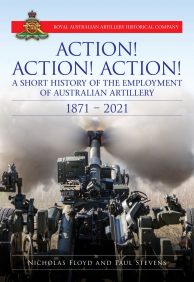
A brief look at Operation Coburg
Operation Coburg, conducted from 24 January to 1 March 1968, marked a joint military effort by Australia and New Zealand during the Vietnam War. The operation unfolded in the context of heightened intelligence suggesting an imminent offensive by the North Vietnamese People’s Army of Vietnam (PAVN) and Viet Cong (VC) during the Tết New Year festival. This prompted the deployment of the 1st Australian Task Force (1 ATF) away from its base in Phuoc Tuy Province to reinforce American and South Vietnamese forces defending the Long Binh–Bien Hoa complex, northeast of Saigon.
American and South Vietnamese intelligence reports had signalled the likelihood of a PAVN/VC offensive, leading the Australians and New Zealanders to strategically position themselves in the vicinity of the village of Trang Bom. Anticipating attacks on their newly established fire support bases along the PAVN/VC lines of communication, 1 ATF sought to disrupt their plans.
The clash between Australian forces and the VC began with early patrols in Area of Operations (AO) Columbus, escalating when Fire Support Base (FSB) Andersen faced repeated major ground assaults. Although Operation Coburg was initiated too late to prevent attacks on Saigon, the Australians and New Zealanders effectively hampered the PAVN/VC lines of communication, limiting their ability to target the Long Binh–Bien Hoa complex. Additionally, they successfully impeded the withdrawal of PAVN/VC forces, inflicting heavy casualties.
This operation marked a milestone as the first deployment of 1 ATF beyond its Tactical Area of Responsibility (TAOR) in Phuoc Tuy, establishing a precedent for subsequent operations outside the province. Concurrently, Australian forces in Phuoc Tuy Province successfully repelled VC attacks against Bà Rịa and Long Điền as part of the broader Tet Offensive in South Vietnam.
On 24 January 1968, 1 ATF headquarters, led by Brigadier Ron Hughes, was air-inserted into the new area of operations between Bien Hoa and Long Khanh provinces. The force initially consisted of two battalions—2nd Battalion, Royal Australian Regiment with Victor Company Royal New Zealand Infantry Regiment (RNZIR) and 7 RAR—along with supporting elements. They were strategically positioned approximately 55 kilometres from Nui Dat.
The operation aimed to deny PAVN/VC access to suitable sites for launching rocket attacks on allied bases and installations, including Bien Hoa Air Base and the Long Binh Logistics Depot. The AO Columbus was assigned to 1 ATF, sparsely inhabited, and situated east of Long Binh, with the concept of operations calling for the establishment of fire support bases, including FSB Andersen and FSB Harrison, to secure strategic locations.
PAVN/VC forces identified in AO Columbus included elements from the VC 274th Regiment, 5th Division, PAVN 84A Artillery (Rocket) Regiment, and the Dong Nai Regiment. Intensive patrols and reconnaissance-in-force operations by the Australians in AO Columbus resulted in engagements with VC forces, including clashes in bunker complexes and skirmishes.
While 1 ATF effectively denied the PAVN/VC use of its AO, the role of the Special Air Service Regiment (SAS) was limited due to the heavy VC presence, leading to the withdrawal of SAS patrols. Notably, on 29 January, D Company, 7 RAR engaged in a significant battle with VC forces, resulting in casualties on both sides.
Despite challenges, Operation Coburg achieved its objectives of disrupting PAVN/VC plans, safeguarding allied bases, and limiting enemy freedom of manoeuvre. The operation demonstrated the effectiveness of coordinated Australian and New Zealand military efforts during a critical period in the Vietnam War.




